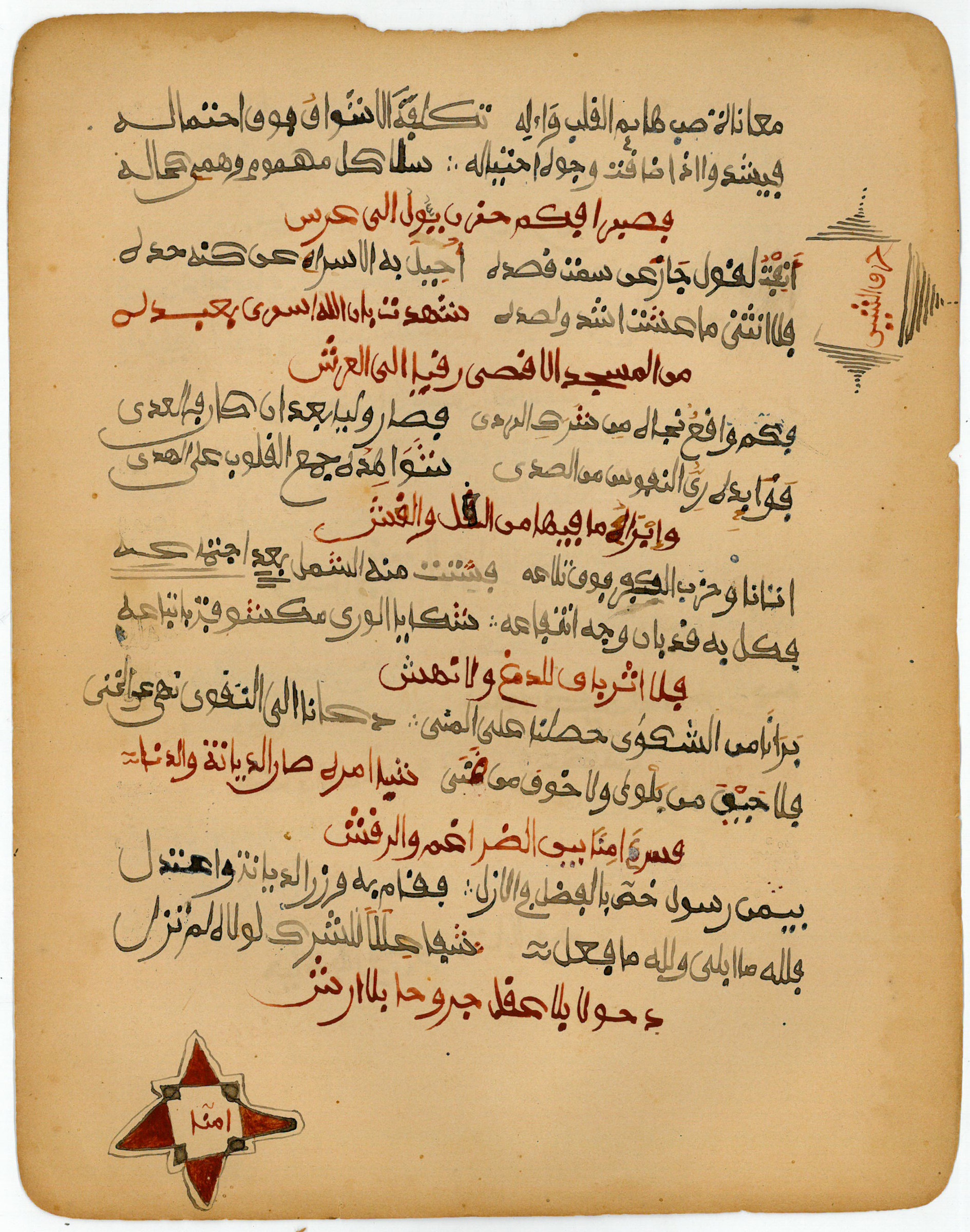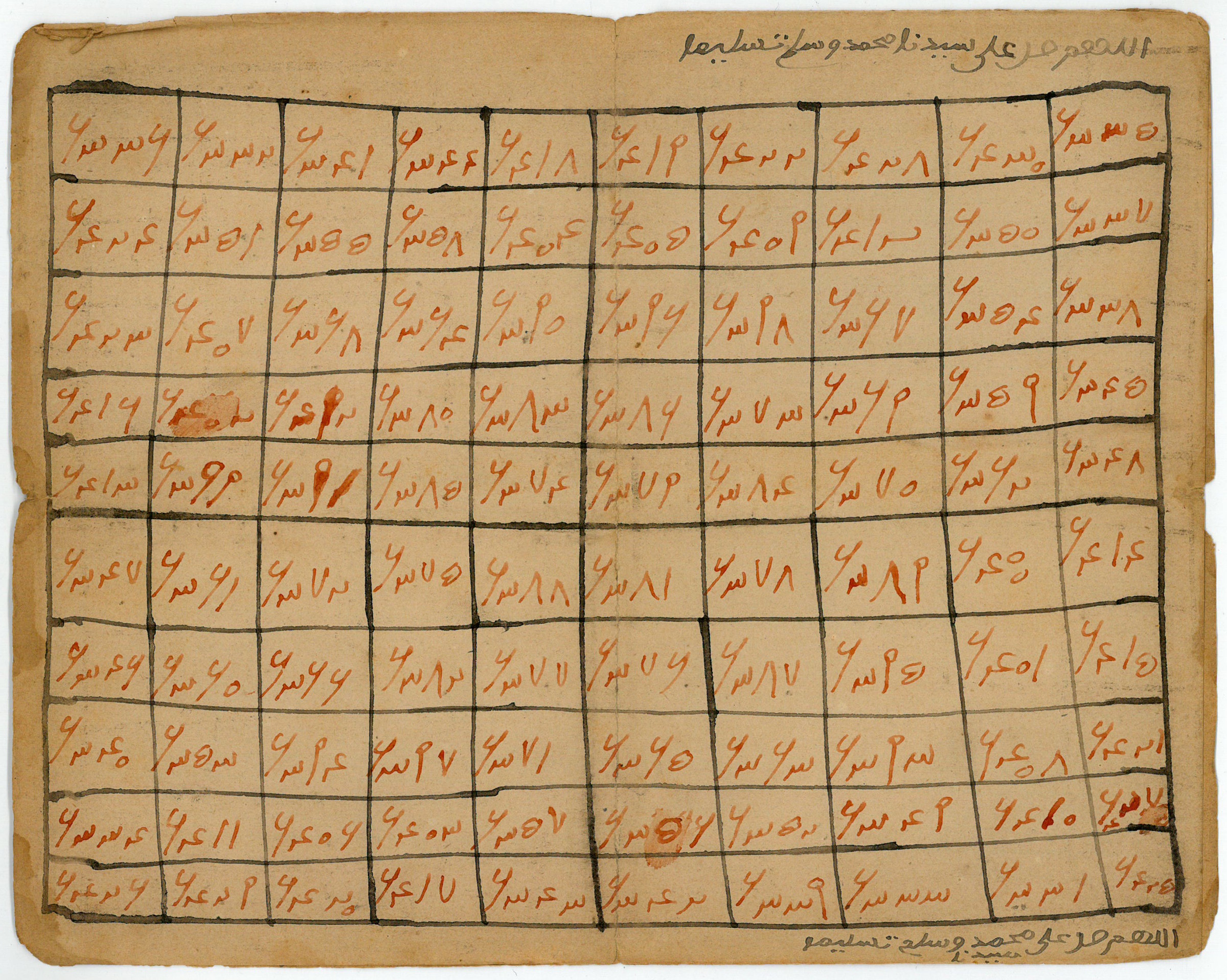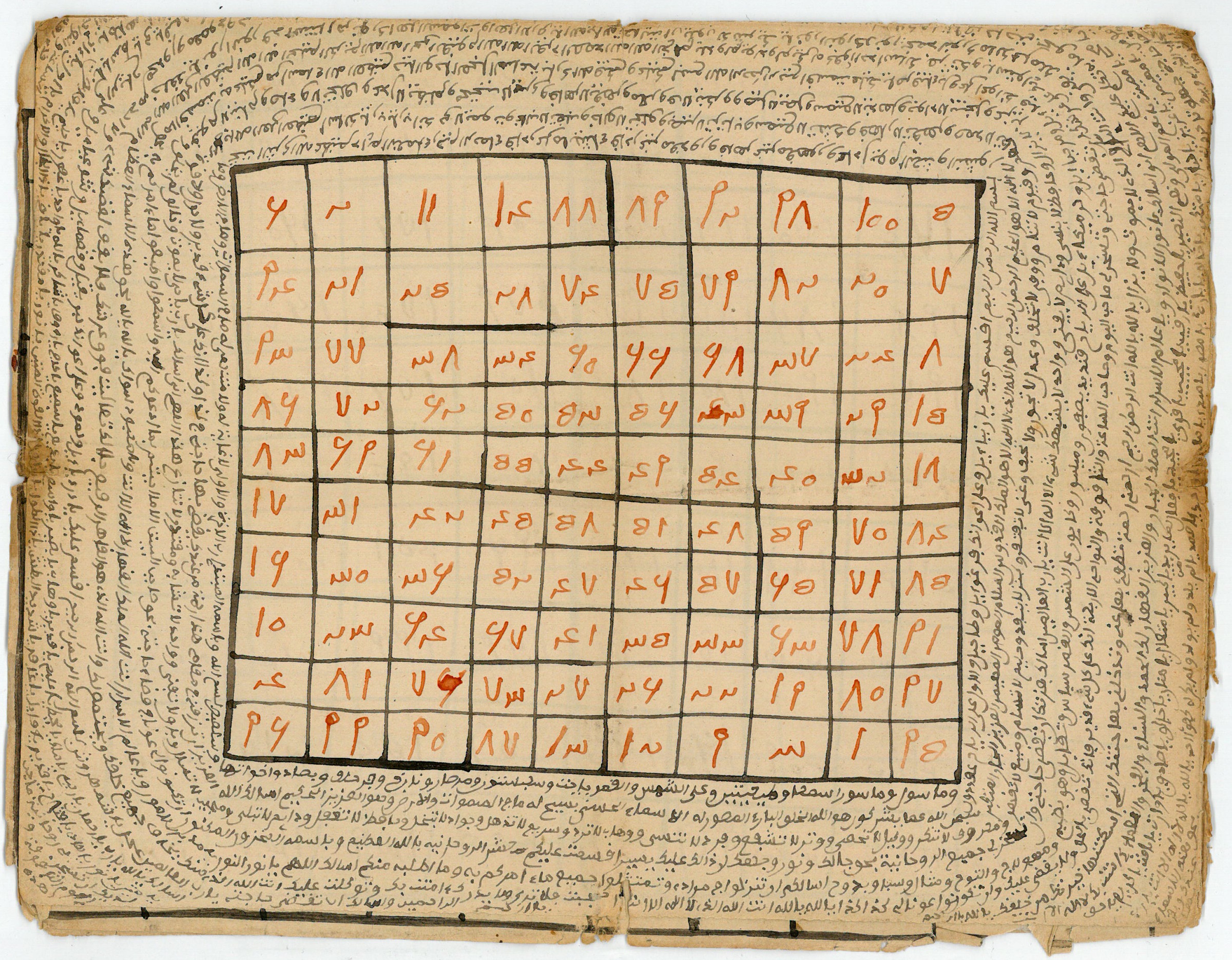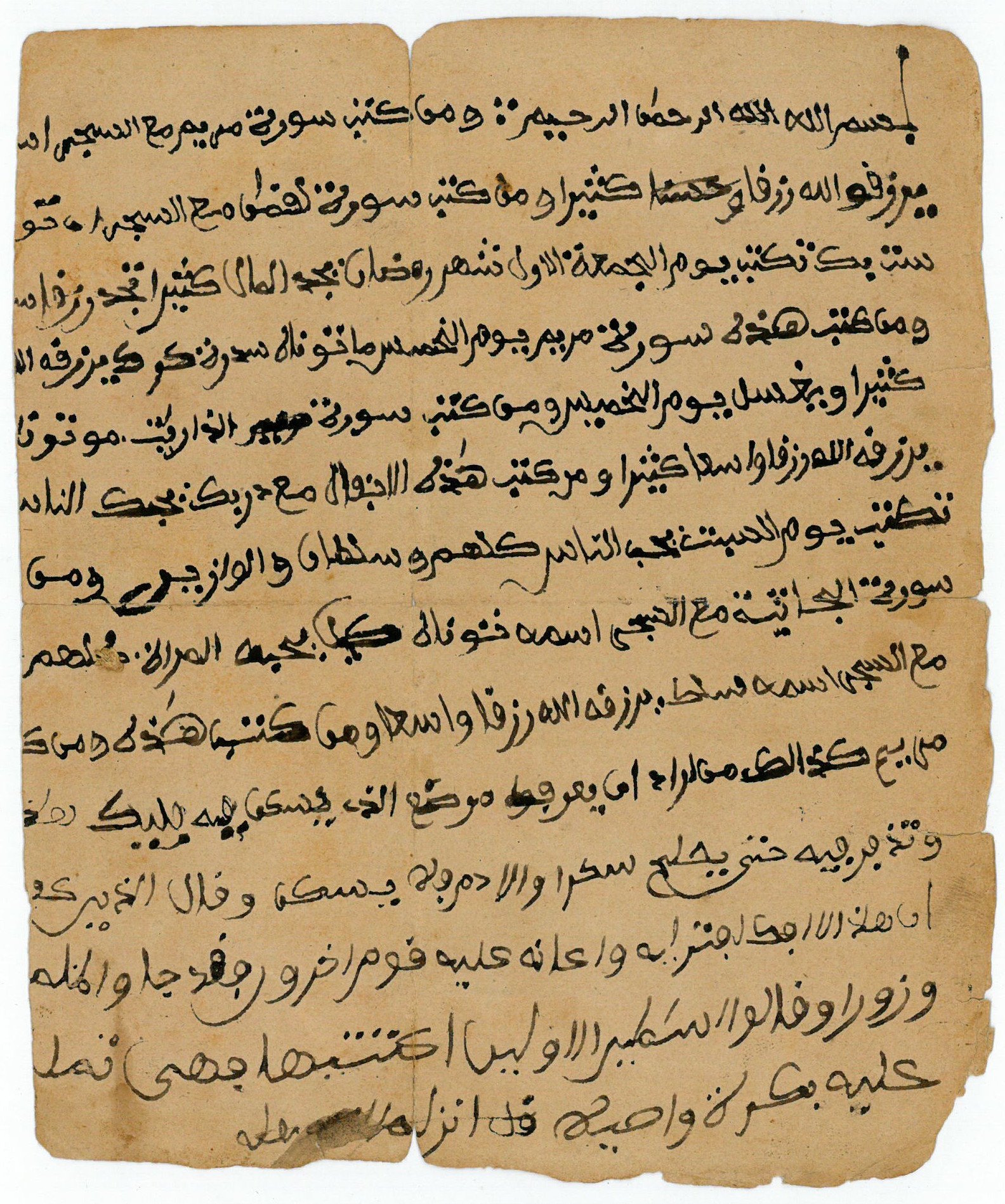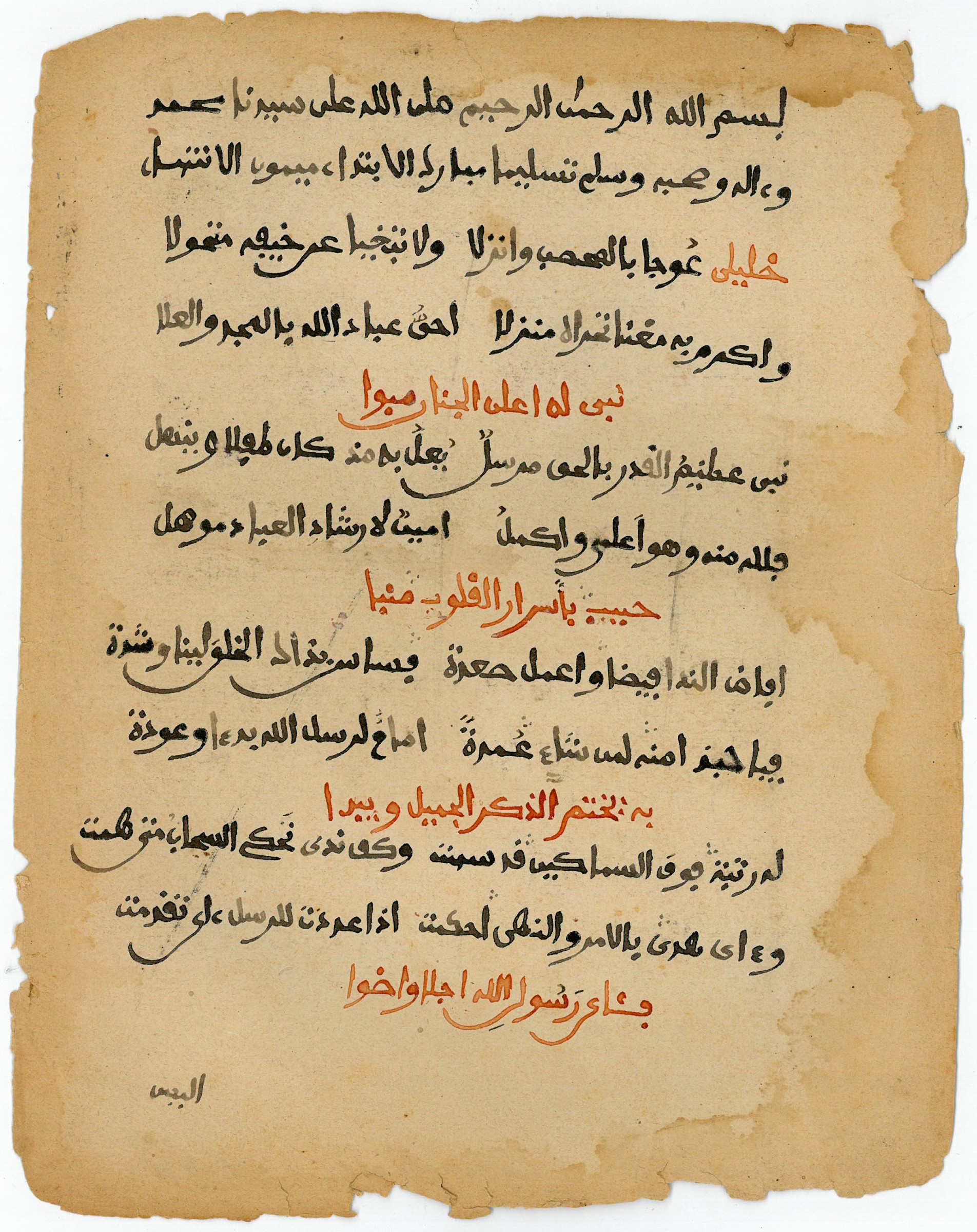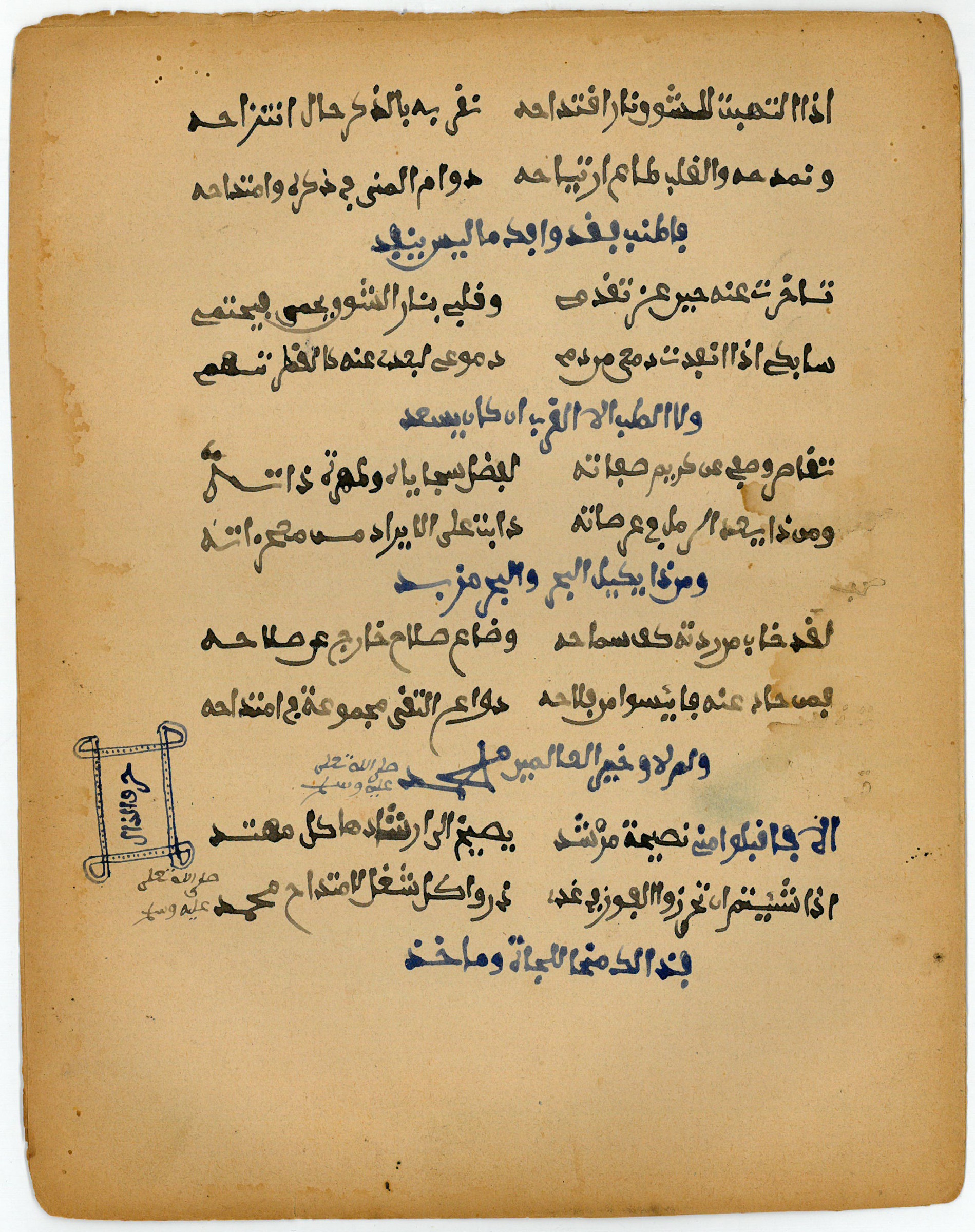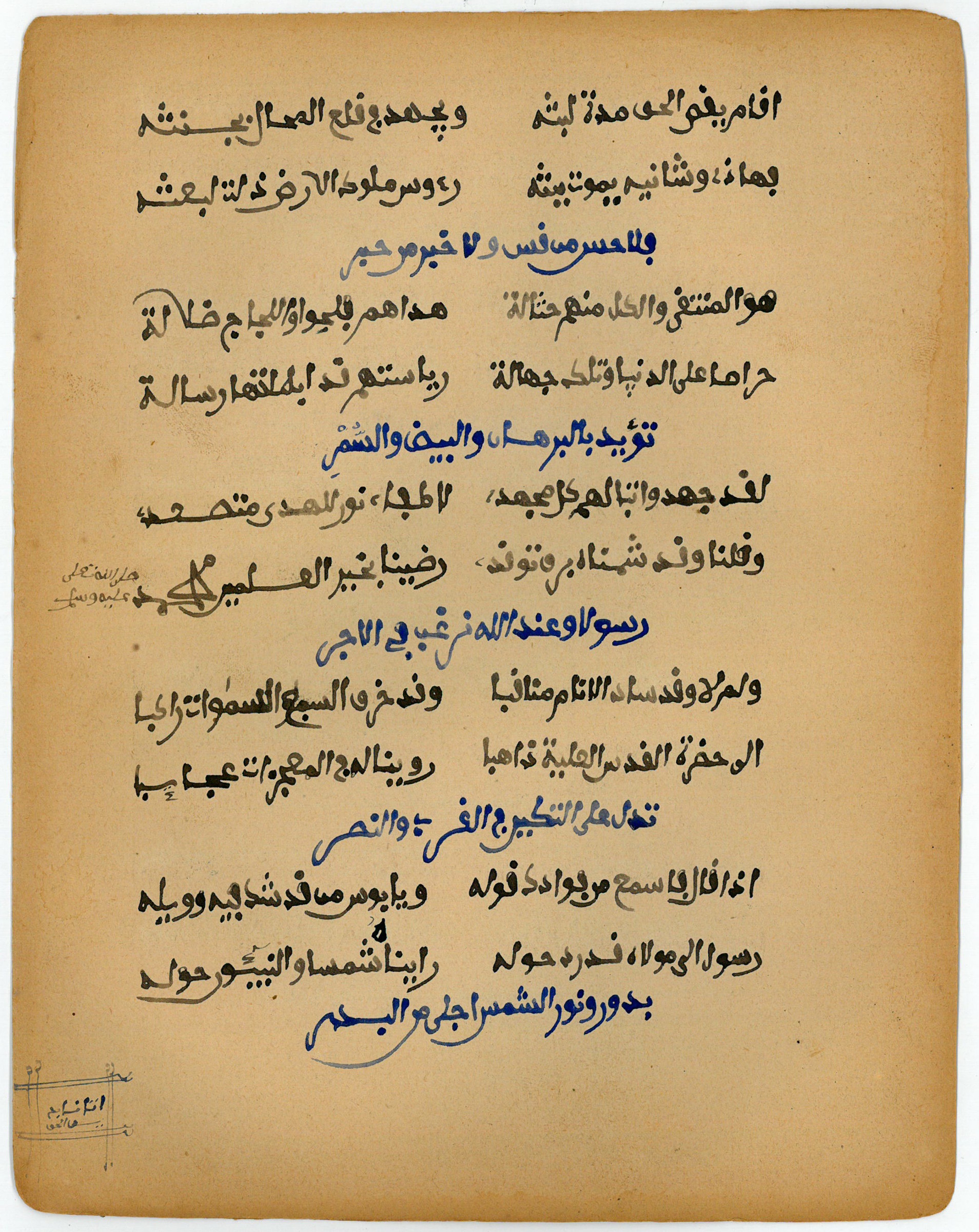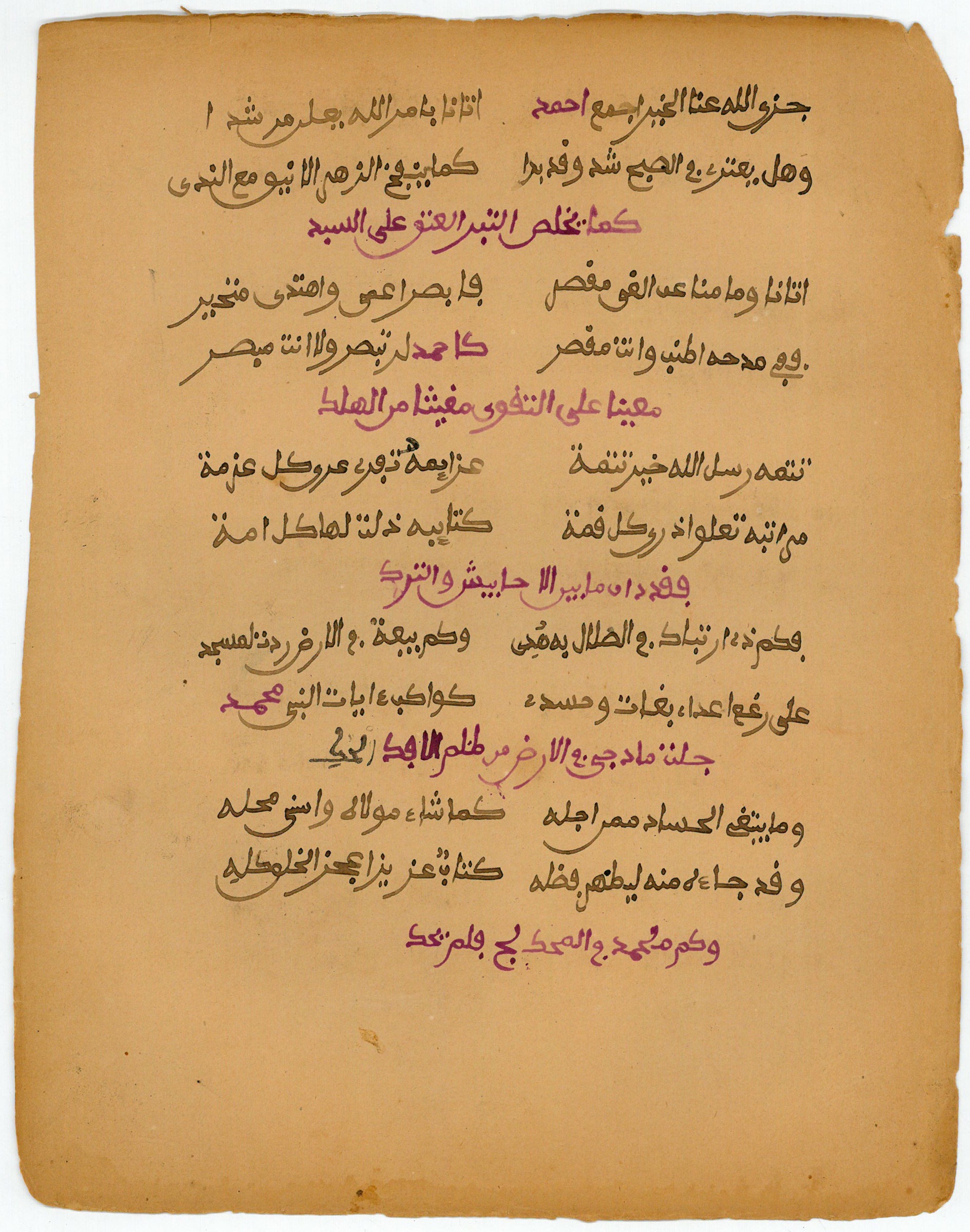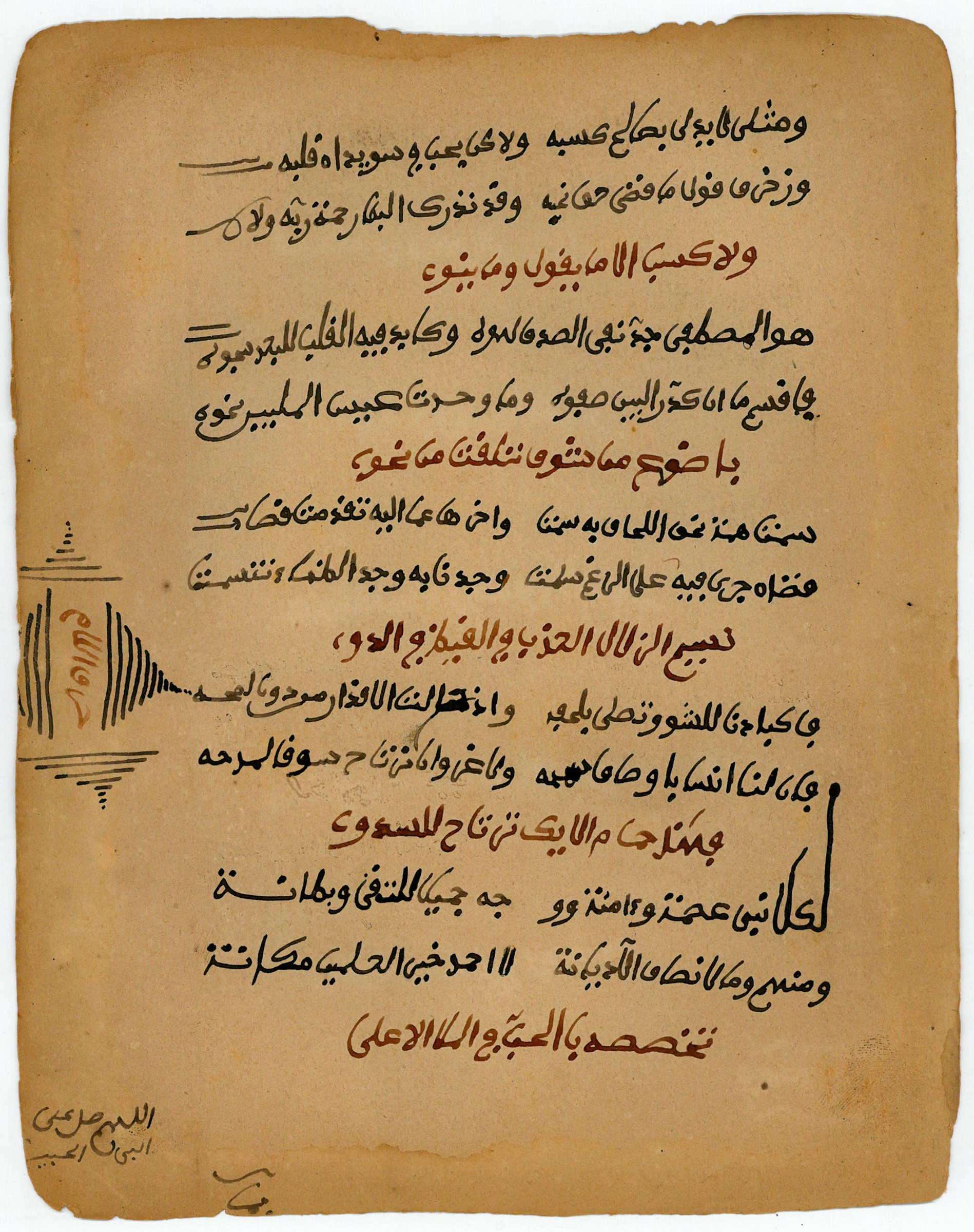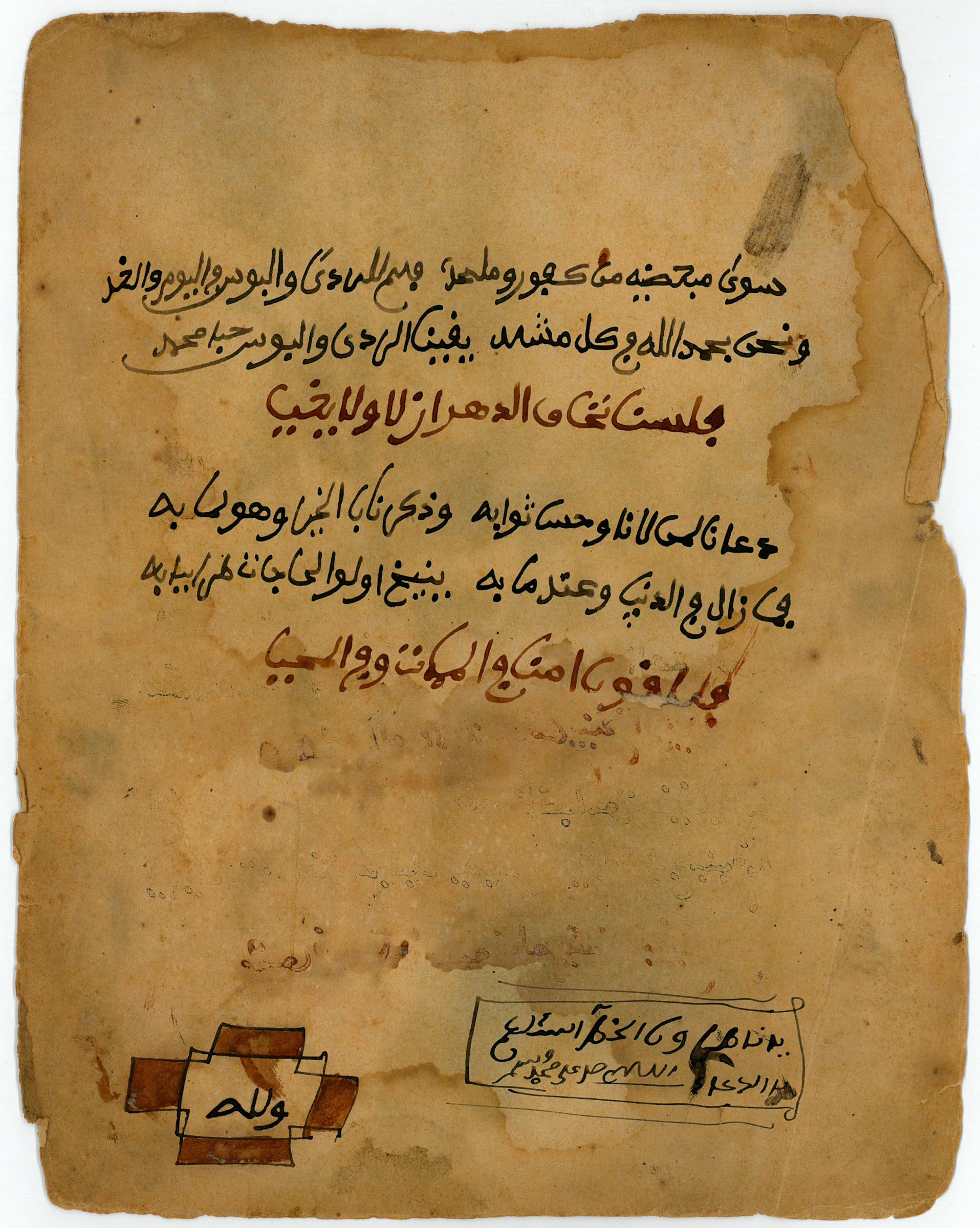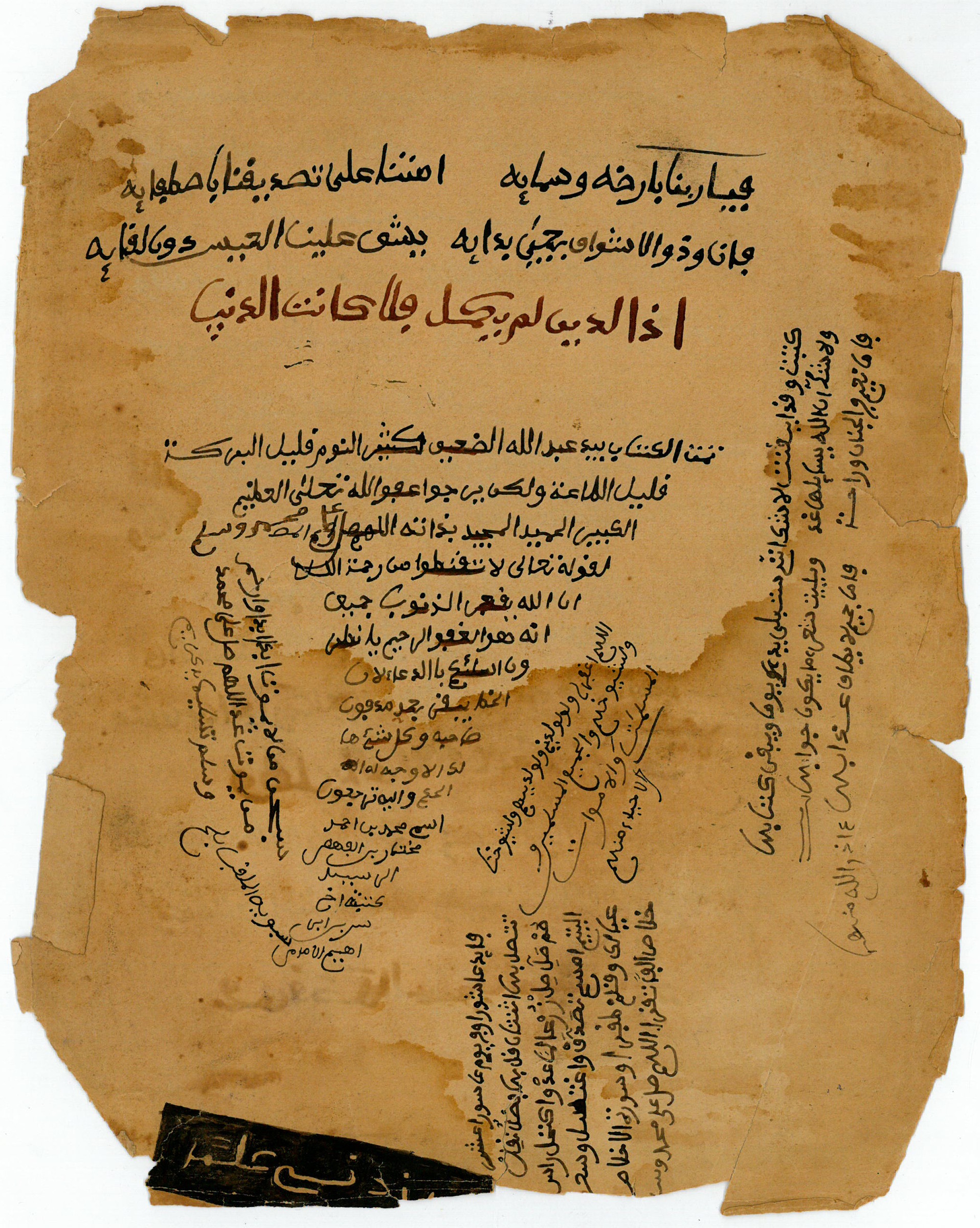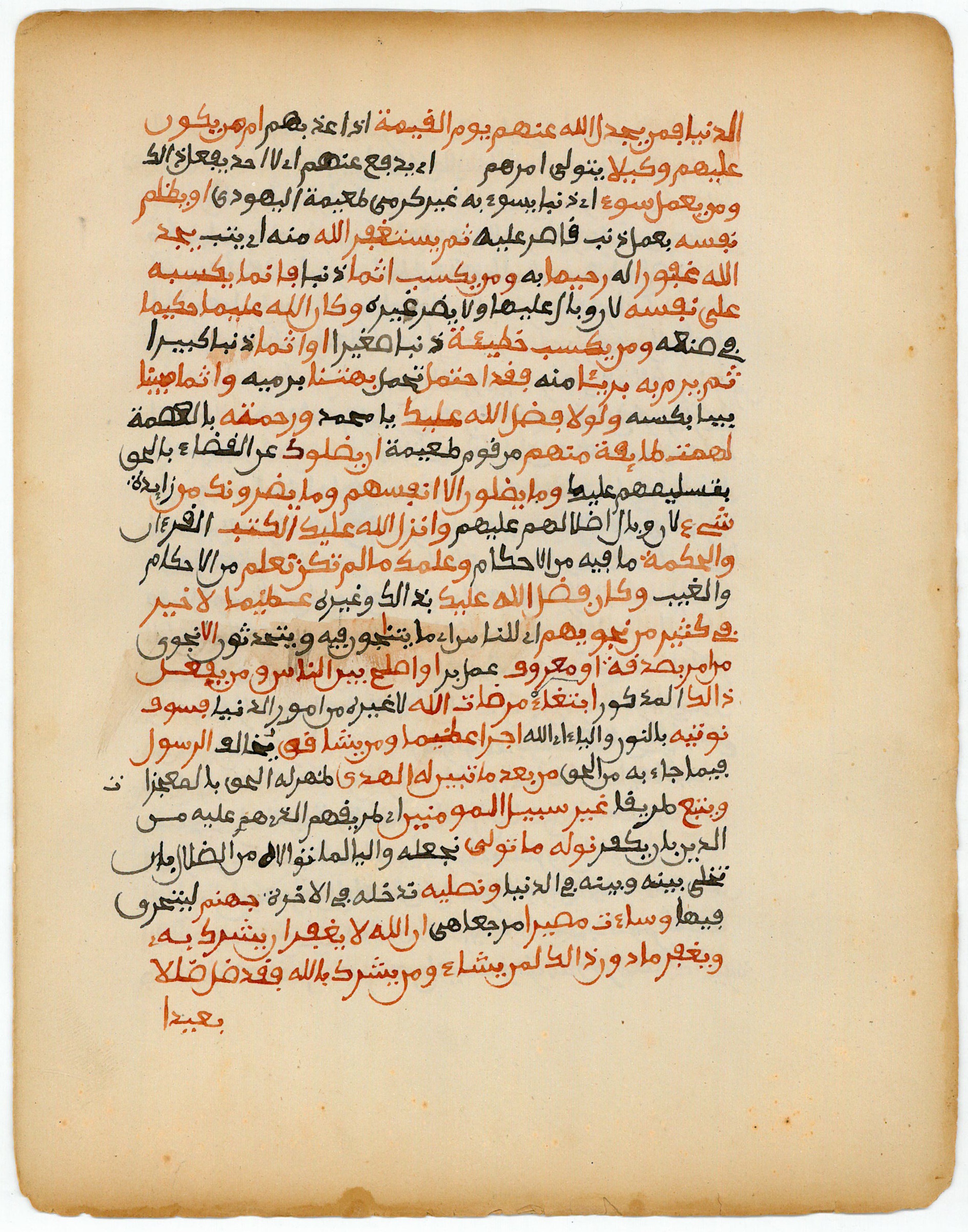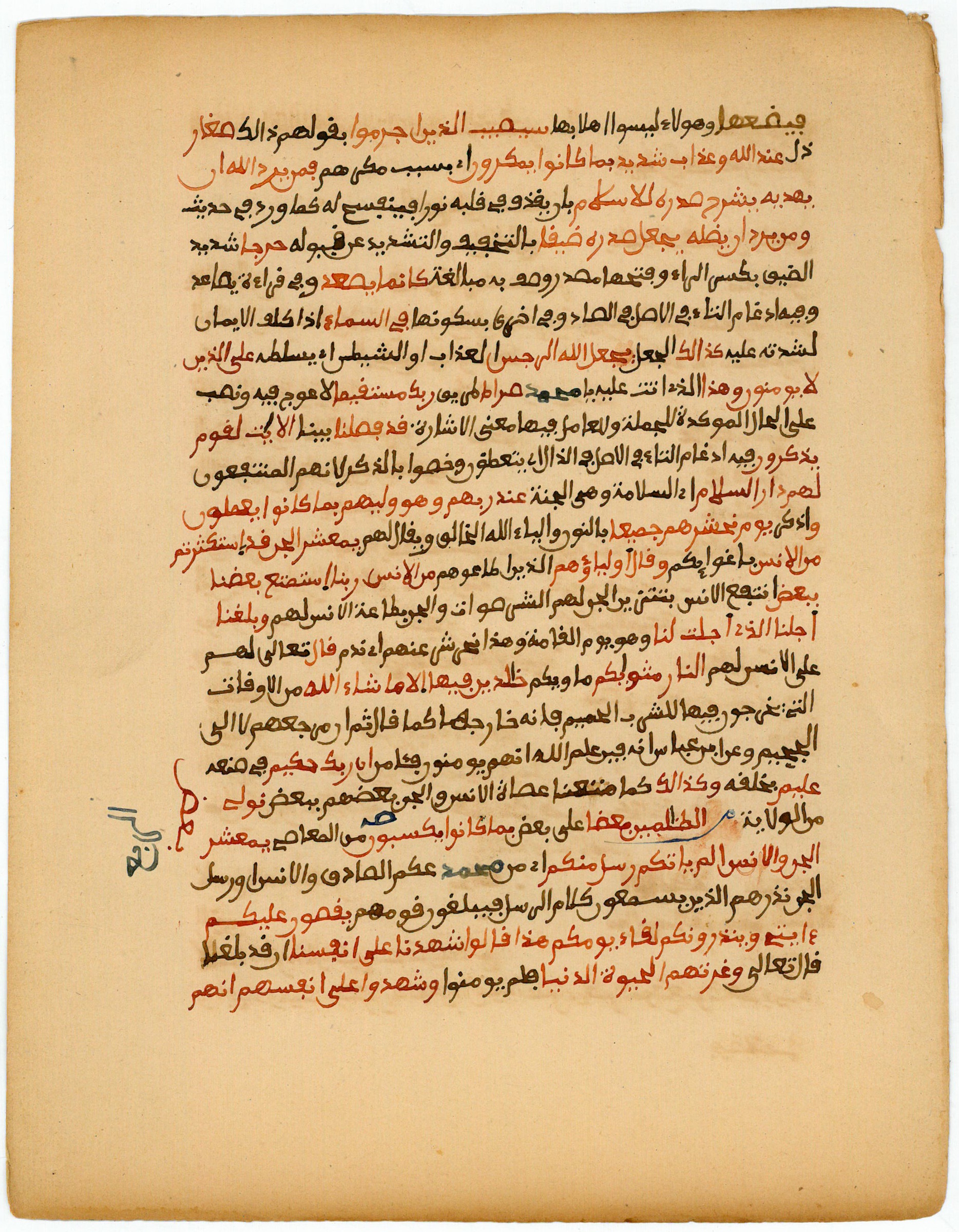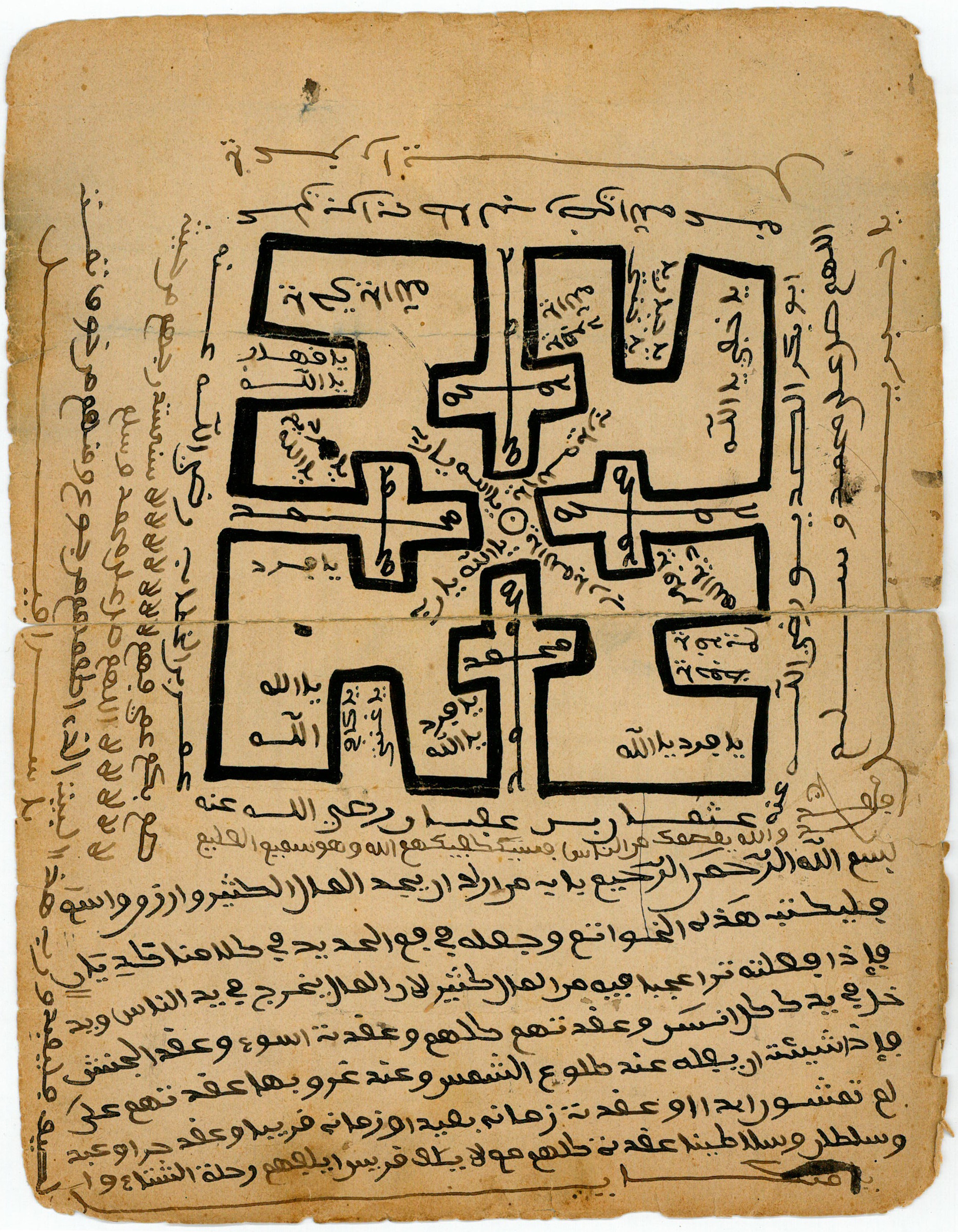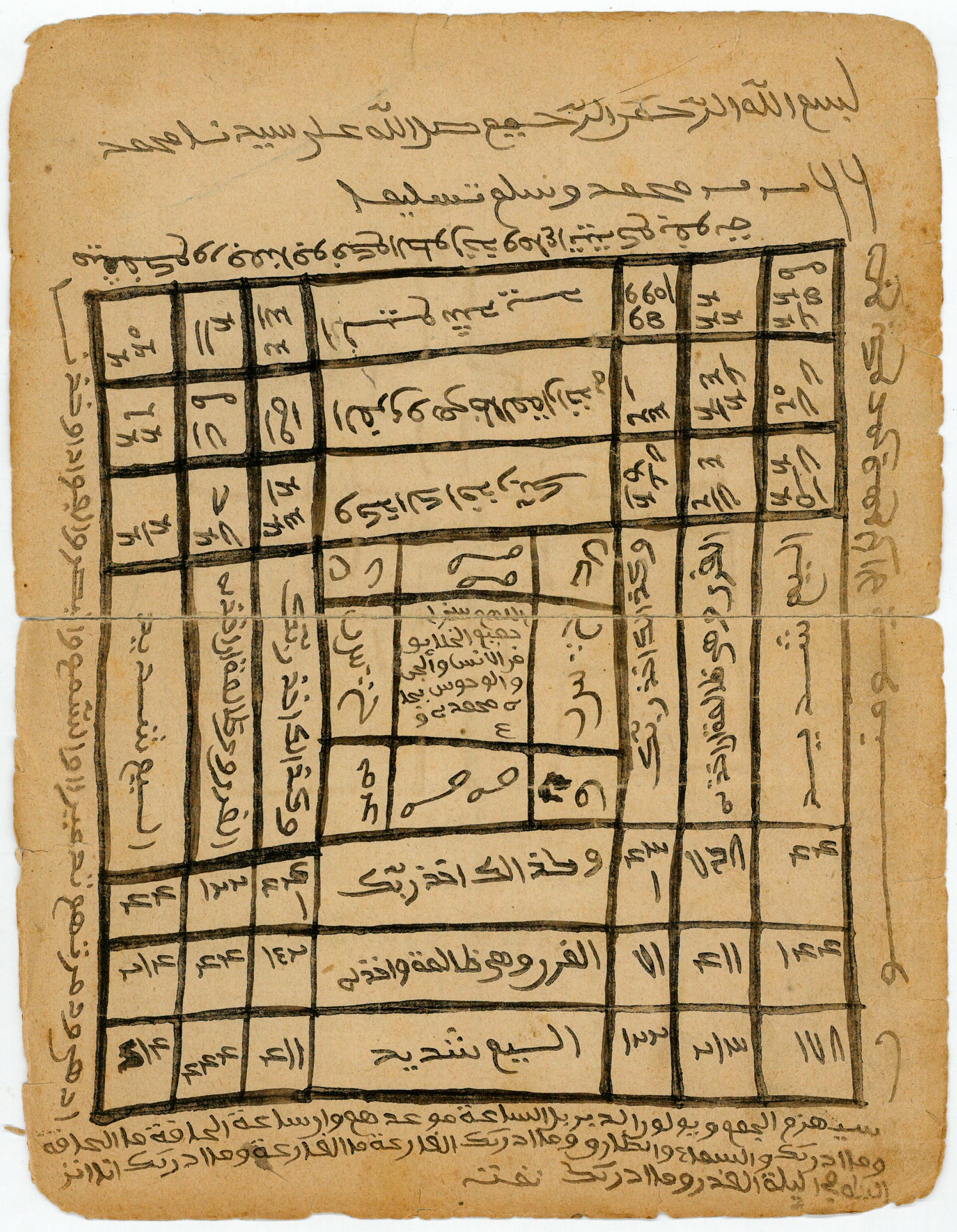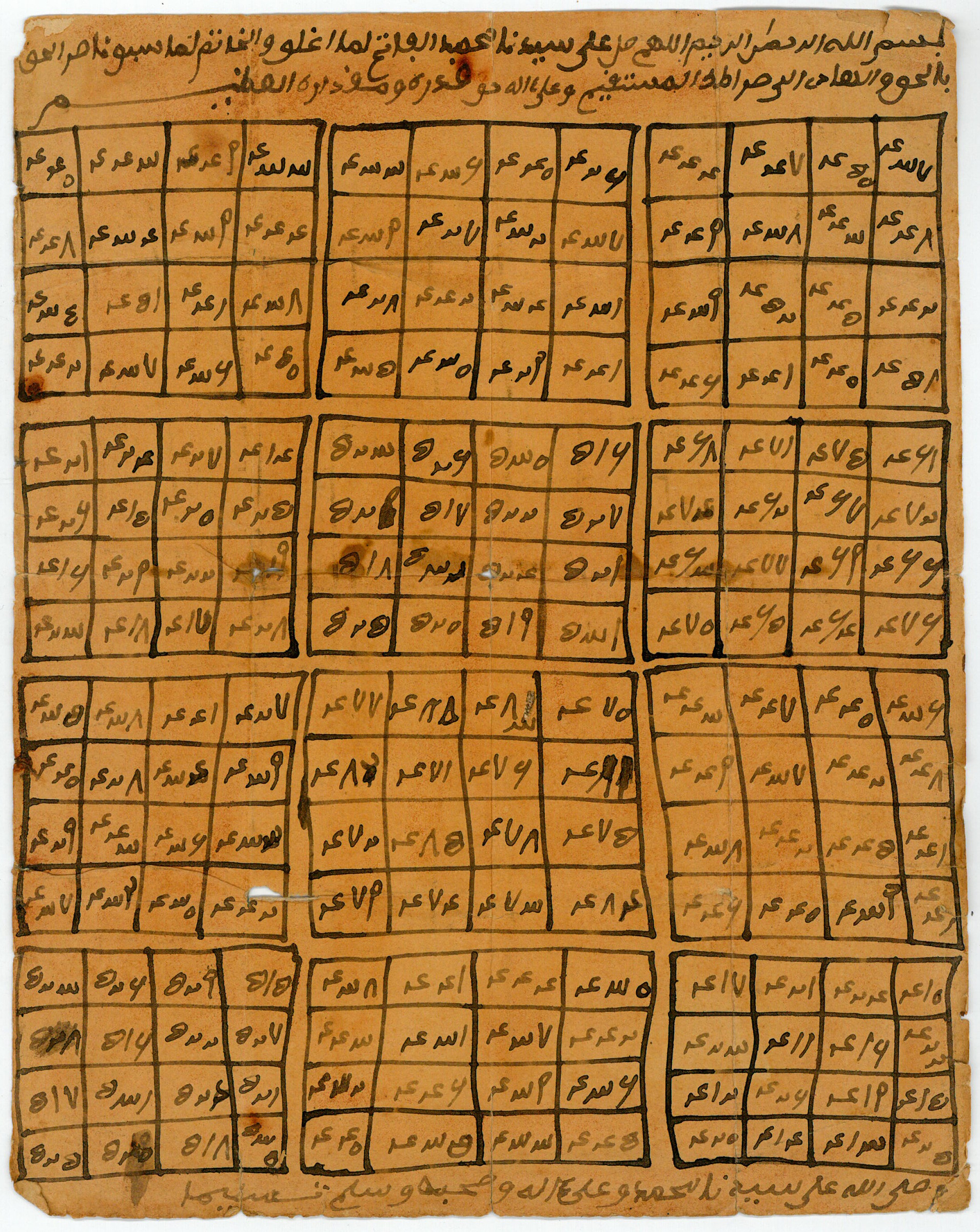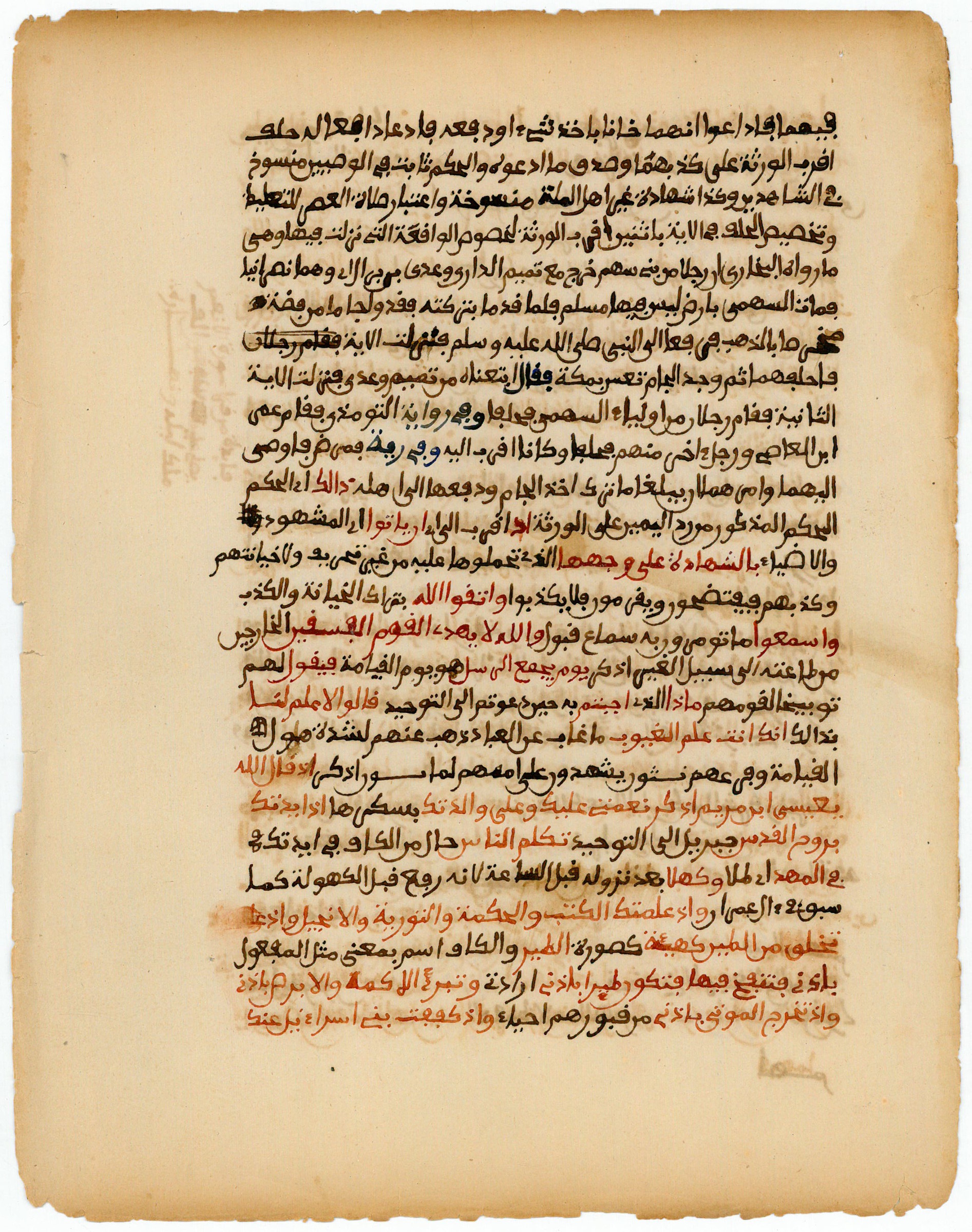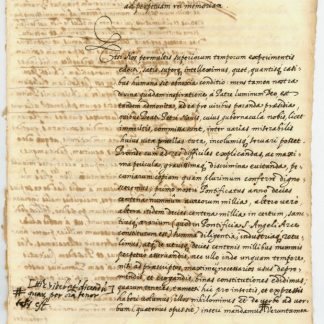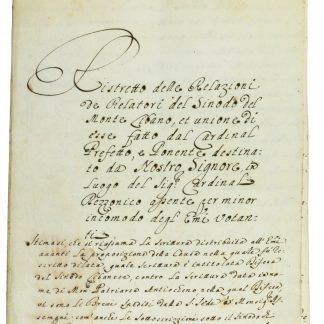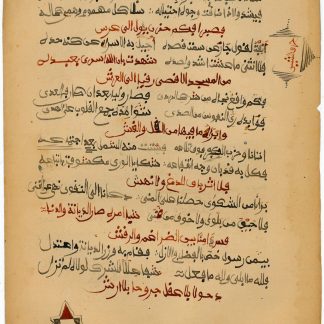Al-Wasa'il al-mutaqabbalah fi madh al-Nabi (Qasidah al-Ishriniyyah).
8vo (175 x 220 mm). 60 ff. Arabic manuscript on paper. Black maghribi script with transition verses in red, blue and purple. (With:) 92 ff. of an unidentified Arabic text and 31 ff. of talismans and tables. Stored loosely in a custom-made light cardboard portfolio.
€ 5,000.00
Collection of Arabic manuscripts from the library of the French archaeologist Paul Gaudin, a major donor to the Louvre and railroad engineer in the Hejaz Railway. The collection comprises a 19th century complete copy of al-Fazazi's ode to the Prophet Muhammad, an unidentified religious text on the Qur'an and hadiths, and thirty-one leaves (plus clippings) of talismans and tables.
"Al-Wasa'il al-Mutaqabbalah", also known as "Qasidah al-'Ishriniyyat", is a famous eulogy of the Prophet written by al-Fazazi, a 12th century poet born in Cordova, Al-Andalus. Fazazi's well-known poem is divided into 29 sections, according to their rhymes, and each ode consists of 20 couplets. Since the day of its composition, "al-Wasa'il" is one of the best-known and best beloved odes written for the Prophet. This manuscript was copied by Muhammad bin Ahmad Mukhtar. Each transition line is marked with red, blue, or purple ink; ode divisions are placed in the margins.
The second manuscript is an incomplete religious text that quotes from the Qur'an and hadiths extensively. Written in black and red ink with red specifically used for Qur'an verses. Neither the beginning nor final pages are present. The final part of the collection is a group of papers and clippings that illustrates talismans and tables.
Paul Gaudin was born in Paris, the son of the chemist Marc-Antoine Gaudin (1804-80). In 1880, Paul Gaudin completed his engineering training, obtained a position as deputy stationmaster in Paris, and was subsequently employed as an inspector by the Chemins de fer de l'Ouest. His career took an unexpected turn when he was sent to Turkey in 1892 to direct the Moudania-Brousse railroad line operated by the important Belgian investor and engineer Georges Nagelmackers. As early as 1894, after Nagelmackers had obtained a concession for the Smyrna-Cassaba railway, Gaudin was promoted to director of this important line and led its expansions. Gaudin's lasting contributions to archaeology with his excavations in the Yortan necropolis (1898 and 1901) and in Aphrosidias, as well as his important collection of Smyrnian figurines and other objects, date to his time in Smyrna (Izmir). His most prestigious and challenging position as a railroad engineer, however, was his charge by Sultan Abdul Hamid II to complete the famous Hejaz railway. Despite financial problems, difficult geographical and climatic conditions, and the often hostile (sometimes even violent) reaction of the local population, Gaudin led the rapid expansion of the line from Ma'an to Medina, where the construction came to a definite halt in 1908. During the project, Gaudin was the first to photographically document the Arabic old town of Al-'Ula in 1907.
Little is known of Paul Gaudin's employments after his contract with the Hejaz railway expired in 1909. He briefly collaborated on the disastrous Ottoman project for the construction of a railway line from Hodeidah to Sana'a in 1911, and he seems then to have permanently returned to France, where he died in Versailles in 1921. Today, Paul Gaudin is best remembered as a major patron of the Louvre, to which he donated more than 2,000 artifacts from his collection. The Istanbul Museum, the British Museum, and other institutions also owe him important contributions to their Asia Minor, especially Smyrna, antique collections.
Collection of Paul Gaudin, by family inheritance.
Stains, browning, paper tears. Unbound throughout. Second text not complete; talismans and tables are folded, some torn.
Cf. G. Charloux, Paul Gaudin et les premières campagnes de fouilles à Yortan et à Aphrodisias, in: Orient-Express, no. 1, 2001, pp. 24-26.

